Movies & TV / Columns
The Top 20 Movies of 2021 (#20 – 11)
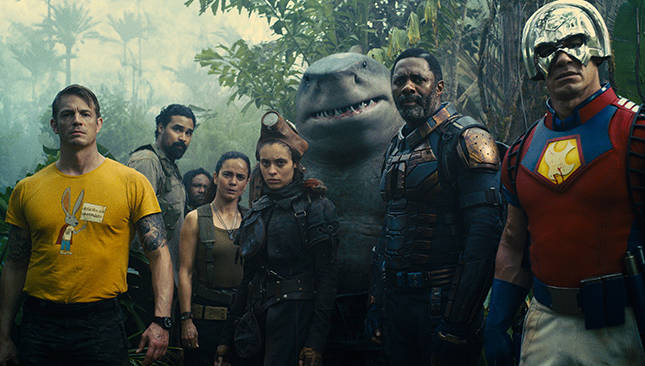 Image Credit: Warner Bros.
Image Credit: Warner Bros.
Welcome, one and all, to my Movies Year in Review for 2021! I’m your host Jeremy Thomas, and today we’ll continuing our look at the best and worst films of the past 12 months. Keep in mind that this list is meant to be my personal opinion and not a definitive list. You’re free to disagree; you can even say my list is wrong but stating that an opinion is “wrong” is just silly. With that in mind, let’s get right into it!
My 2021 movies year in review continues this week! Last week we took a look at the Worst 20 Films of the year with numbers 20 through 11 and numbers 10 through 1. With the worst out of the way (and hopefully never thought of again), it’s time to celebrate the best of the year. 2021 was actually quite a good year for film as a whole. Yes, we got a lot of bad but there were some very, very good films across genres. Horror, fantasy, drama, science fiction and comedy all factor into my top 20, which cover a breadth of styles from big blockbusters to small indie films. There’s a lot more I could say but I’m just going to jump right in. Let’s get to it, shall we?
Caveat: My criteria for a film qualifying fdor this list is simple: if a narrative film had its domestic release this year, either theatrically or in a marketed release on VOD or a major streaming service, then it was eligible. The only other caveat is that I have tried, but have not seen everything that was released in 2021, especially factoring in streaming services. The films that I missed that could have possibly qualified based on reputation are King Richard, C’mon C’mon, Passing, The French Dispatch, and Luca. Other than those, I feel reasonably confident I would have seen just about every movie that would have likely made the list. For those curious, I saw a total of 168 films that were released in 2021 (up significantly from last year’s 119).
Just Missing the Cut
• Coming Home in the Dark
• Shang-Chi and the Legend of the Ten Rings
• The Last Duel
• Zola
• The Spine of Night
#20: West Side Story
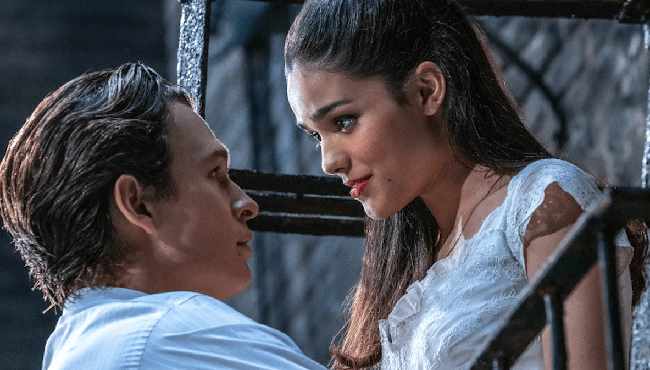
Musicals may not have lit up the box office in 2021, but it wasn’t for lack of trying. In the Heights, Cinderella and (the not at all good) Dear Evan Hansen tried to bring back the big-budget musical to much fanfare but less financial success. Even Steven Spielberg couldn’t make a hit out of the genre, with West Side Story counting as a financial bomb. But making money and making a good film are two very different things, and he succeeded at the latter.
It takes a while, to be fair, for Spielberg’s re-adaptation of the iconic Broadway story to truly click. Don’t get me wrong; from the first frame of this 1950s-set update of Romeo & Juliet, everything is done gorgeously on any definable level. The performances are great, the choreography is n callback to Jerome Robbins’ work from the 1961 film in the best possible way. And Spielberg’s expansion of the film’s look is fantastic, giving everything a bigger scope with a stunning aesthetic and fantastic framing. All that said, it has some heavy shoes to fill and it comes off just a bit like a vanity project.
Then, Maria (a brilliant Rachel Zegler) and Tony (Ansel Elgort, merely quite good) meet on the fire escape and “Tonight” happens, and it all clicks into place. What was very good becomes transcendent as everything that was just the tiniest bit off came into synch. From that point forward, Spielberg’s adaptation hits the notes with near-perfect clarity. That’s thanks to Zegler’s absolute star-making turn as Maria, as well as Ariana DeBose’s fiery but down-to-earth Anita. Those two performances are the epitome of excellence, and they make everyone around them better. When they share the screen in moments like “A Boy Like That,” the film reaches heights even the 1961 film version didn’t.
And yet, they aren’t the only standouts here. Stage star Mike Faist is a force of nature as Jets leader Riff, and David Alvarez’s Bernardo is the best iteration of that character I’ve ever seen. These great performances center innovative work behind the camera by Spielberg, who enhances the technical merits without losing track of the story’s heart. And when it gets raw and bares its nerves — it cuts very, very deep. Spielberg may have been playing with fire by trying to recreate the magic of one of Hollywood’s best musicals of all-time, but he carries it off with nary a scalding.
#19: Candyman
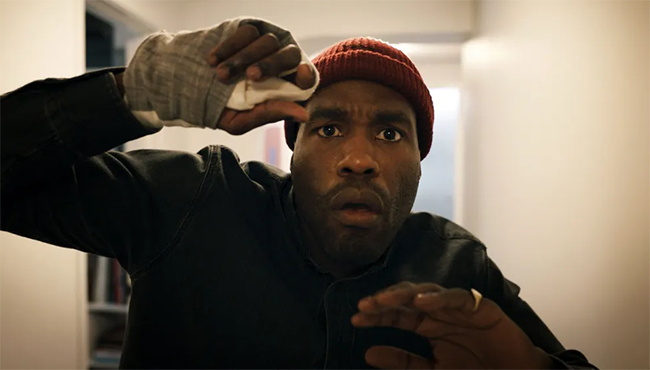
For horror fans, Candyman was easily one of the most anticipated films of 2021. Bernard White’s 1992 ghost slasher film is rightly venerated as high point in dreamlike horror and created an instant horror icon in Tony Todd’s titular character. And while it did get some less-than-stellar sequels, the franchise never seemd to get its proper due following the first film. That left an opening that Nia DaCosta was skillfully able to fill. DaCosta’s Candyman presented a daunting challenge for her, tasking the director with updating a horror classic while making it accessible and relevant to modern audiences. This is the trickiest tightrope act that these modern revivals must walk, but fortunately she was up to the task. DaCosta’s film explores the power of storytelling as a way to process and inform generational trauma, a vector that allows her to bring audiences up to speed on the original story in a natural way before telling its own tale.
Returning to the original (now gentrified) neighborhood, DaCosta explores the power of storytelling as a way to process and inform generational trauma, a vector that allows her to bring audiences up to speed on the original story in a natural way before telling its own tale. That’s done through shadow puppetry, an inspired motif that calls back to the idea of myths and scary stories told over the campfire and which gives the film another element of visual flair to complement with several other techniques, such as the disorienting opening shots which suggest a mirror behind held to not only the original film, but to society and to its own characters. She also stages several inventive kills, including a crane shot that ends 2021 as my single favorite cinematic image of the year.
DaCosta is able to pull plot elements and threads from the original film into her story with careful ease, and rests the back of her movie on two very capable leads. Yahya Abdul-Mateen evokes the slow decay of something akin to possession taking over a once-vibrant person, while Teyonah Parris carries much of the film’s emotional core as Brianna. These two keep things going strong even when a couple of moments get shaky in the final act, with Colman Domingo lending a hand through his twitchy performance as William Burke, the man with the answers Abdul-Mateen’s Anthony needs. This is a film that has all the forms of horror, from suspense and uncomfortable emotional trauma to some gnarly body horror and bloody kills. And it has a strong sense of its thematic elements to boot. It’s a thought-provoking and well-made horror film that stays true to the original franchise’s themes while delivering a lot of strength on its own merits.
#18: The Suicide Squad
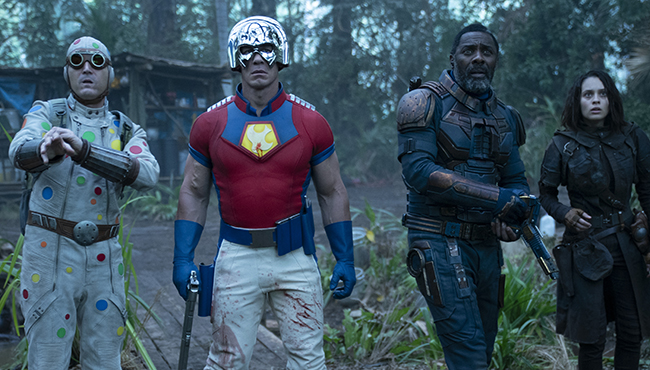
Look, not every film has to be a deep thematic exploration of the human condition to qualify for “Best of the Year.” Sometimes a film just needs to be very, very good at what it sets out to do. Case in point: The Suicide Squad. The DCEU has undergone quite a tonal shift post-Justice League, which was only going to benefit this particular franchise. The first Suicide Squad is hated by many because it had the unenviable task of course-correcting from Batman V Superman: Dawn of Justice while still trying to be a film that could fit in that world. It had problems beyond that (SO MUCH exposition!), but it’s biggest issue was that it had to be gritty and dark while also trying to be a fun, quippy romp.
Bringing James Gunn on board for this film was, without question, the right move. Gunn’s The Suicide Squad is able to feel like an accurate follow-up to the first film while completely embracing the popcorn movie factor. Gunn has shown he can excel at ensemble pieces like this, and he knocks it out of the park with a sprawling cast of stars delivering on the action and, often, some pretty hilarious material. Margot Robbie gets to play her most well-rounded take on Harley Quinn yet, and she’s surrounded with great work from the likes of David Dastmalchian, Peter Capaldi, Sylvester Stallone, Joel Kinnaman (redeeming Rick Flag after a boring outing the last time), and especially John Cena and Idris Elba. A scene in the second act where Cena’s Peacemaker and Elba’s Bloodsport have a competition of who can most impressively kill the most enemies gives Elba a chance to relax and have fun in a way that hasn’t been seen from him in a long time, and it’s an absolute joy.
Gunn knows exactly what he’s doing with this film, and he finds the difficult equilibrium of satirizing the trend of superhero movies to devolve into CGI-laden spectacles while still working within those confines. The big battle with the threat is ridiculous, but very specifically framed as ridiculous. He also manages to fit in some real emotional beats and progresses his characters in interesting ways. I honestly expected to enjoy The Suicide Squad but not necessarily love it; suffice it to say that this exceeded my expectations by a wide margin.
#17: A Quiet Place Part II
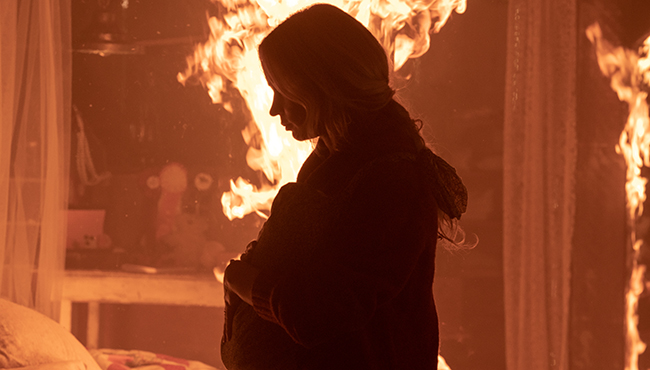
A Quiet Place was a film that seemed to come out of nowhere in 2018 to capture the attention of horror and non-horror fans alike. I always love seeing those kinds of phenomenons occur, and John Krasinski’s post-apocalyptic experience of silence and fear was an ingeniously tense theatrical experience, with some real emotional touches to boot. When it blew up at the box office, we all had to know that Paramount would want a follow-up, and the question became whether Krasinski could make lightning strike twice.
Safe to say, he exceeded. A Quiet Place Part II doesn’t reinvent the wheel, but Krasinski does change things up by letting go a touch of the intimate suspense and oppressive mood in favor of opening the mythology up and delivering more action. It’s almost too obvious to say that this is the Aliens to the first film’s Alien, but it’s also too true not to say. This doesn’t go to James Cameron levels of balls to the wall at all, but it is more action-y and that’s not an awful choice as Krasinski is adept at handling those scenes and doesn’t shed all the franchise’s suspense and tension in the process.
Regan is the hero that horror has been waiting on for forever, and Millicent Simmonds is perfect for her. The film follows twin narratives of Regan seeking out a way to help mankind fight back against the monsters while Emily Blunt’s Evelyn tries to protect the family she has left, and that means this is somewhat less focused. It’s not much of a problem though because we care about the characters of both stories. That includes Cillian Murphy as Emmett, an old family friend drawn into Regan’s cause. It’s one of Murphy’s best performances in years, and he settles into the film with ease. Really though, Simmonds is the star here. She gives a bad-ass performance here, nailing every aspect of a difficult character to portray. Regan could have become an overly-capable character or an irritating teen very easily, but Simmonds is able to balance her youth and vulnerability with willpower and resourcefulness. She helps elevate this film to be as good as its predecessor in many ways.
#16: The Green Knight
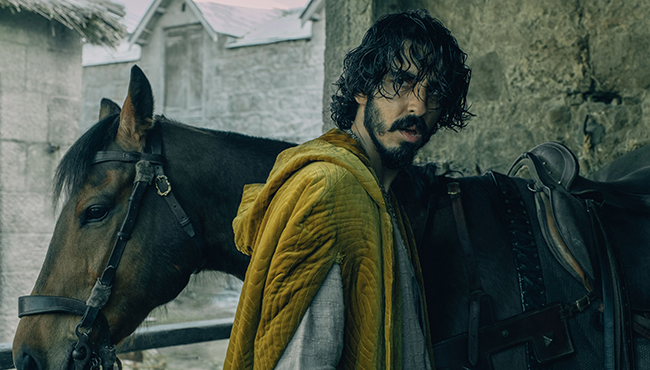
A24 is known to many as a house of horror thanks to films like Hereditary, Midsommar, Under the Skin, The Witch, and The Lighthouse. While I love me some A24 horror, I always feel a little bad for their non-horror stuff because there’s a lot of it, and it’s usually also quite good. But an interesting phenomenon that has come out of the studio’s reputation is that some of their non-horror stuff gets perceived as being in the genre. That’s unfortunate because it means that they may not get seen by non-horror buffs, and that people will come in with inaccurate expectations. You can see that from the last year in both Lamb (which, while interesting, didn’t make this list) and The Green Knight.
Writer-director David Lowery’s Green Knight was one of the most expectation-subverting films of the year. While it has some supernatural elements, it isn’t horror and while it is an adventure about a knight traveling dangerous roads toward a conflict, it isn’t action-heavy. Instead, it’s a character study about a man’s integrity being tested in the face of extreme adversity. Dev Patel delivers a knockout performance as Gawain, a young knight who makes a crucial mistake in a contest against the Green Knight and thus must travel a year later to what may well be his death.
I take no issue with anyone who found this film too slow, because again those expectations were probably high. But for those who have an appreciation for a film that takes its time, there is so much to enjoy here. It’s a visually stunning film; Lowery’s team gives this a beautiful palette and the production design goes a long way in transporting us into the film’s world. The script carefully deconstructs the original story in fascinating ways, with Lowery delivering a couple moments that nicely pull the rug out from under the audience. Some of my top films of the year are ones that were just fun, and some were ones that stayed stuck in my brain for a long time afterward. The Green Knight was very much the latter, and one I expect to like more every time I see it.
#15: Judas and the Black Messiah
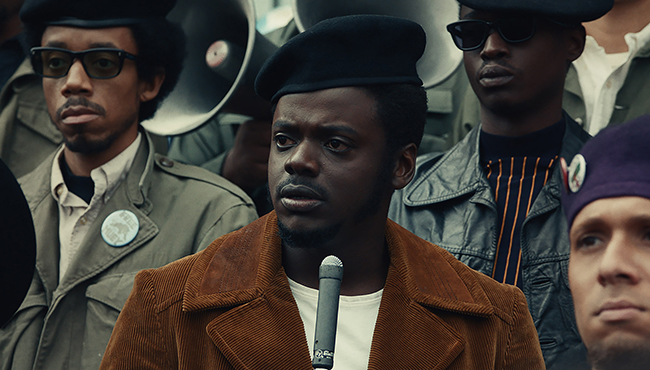
One of the first films to release on HBO Max’s day-and-date streaming planned turned out to be one of the year’s best. Shaka King’s Judas and the Black Messiah takes a thrilling and incredibly relevant true event from the 1960s and gives it a dramatic treatment that conveys the power of the story and his lead stars. Both Daniel Kaluuya and Lakeith Stanfield are pitch perfect in their roles as Black Panther leader Fred Hampton and Bill O’Neal, the man sent by the FBI to inflitrate Hampton’s inner circle and report back. King wrote the screenplay with Will Berson from a story they conceived with Kenny and Keith Lucas based on the real-life events that led to Hampton’s assassination during an FBI raid, and the script skillfully captures the trajectories of these two men on the paths that will lead to that fateful moment.
King’s direction keeps this film moving ahead with unceasing momentum, though no small amount of the power of this film belongs to Kaluuya and Stanfield. Kaluuya won a deserved Best Supporting Actor award at last year’s Oscars for his work as Hampton, but Stanfield would have been no less deserving. The two share a palpable chemistry with each other and the rest of the cast, embodying these historical men as multilayered individuals who inspire conflicted emotions. Stanfield arguably had the harder job, as Hampton is a larger than life persona and he has to live both sides of O’Neal’s double life but he pulls it off well.
Behind the camera, King takes care to show multiple perspectives here, and that helps lend weight to the climactic scene. This is a film where we know perfectly well how it’s going to end if we know our US history. And as the time winds close to the tragic moment, it’s hard not to be drawn into the outrage that the film invokes. It’s a film that shows us how the government was (and still is, frankly) willing to turn people against each other whenever it views a threat to the status quo, and it doesn’t need to draw parallels to modern day events because they’re fresh in our mind. This was an early contender for best film of the year and it’s one that should remain in people’s conversations for a good long time, because it certainly didn’t leave my mind very much over the past twelve months.
#14: Spencer

Even if Spencer is somehow left shut out of award season — and it shouldn’t be — let this be the final nail in the coffin of the idea that Kristen Stewart isn’t a phenomenal actress. Stewart has been fighting perceptions of her acting skills as poor for years, ever since she shot to stardom in the Twilight franchise. And yet, before she was put in the impossible to elevate role of Bella Swan, Stewart was delivering great work in films like Into the Wild and The Cake Eaters. Since Bella, she’s gone on to do more great work with roles in films like Clouds of Sils Maria, Still Alice, Personal Shopper, and last year’s Underwater, proving that it wasn’t the actress but the role.
Spencer is the film that should blow those final doubts away. Pablo Larraín previously showed his aptitude at crafting character pieces about public icons with Jackie, which gave Natalie Portman a chance to shine. He does the same thing here for Stewart, who sinks herself into the role of Diana and lets us see all the exposed nerves of the late Princess of Wales. Set in the Christmas holiday before she decides to leave Charles, Steven Knight’s script functions as something far more interesting than a simple dramatization of the historical events and delves deep into Diana’s psyche, with chilling results.
The story by Knight serves as part-drama, part-psychological thriller with a couple surprising elements of horror tinged throughout as well. Larrain dives deep into Diana’s troubled emotional state resulting from the isolation she received from the royal family, and Stewart isn’t afraid to let all be shown. She presents a portrait of Diana as a frayed individual, but one who has reserves of emotional strength that she calls on at the right times. Timothy Spall has a memorable supporting turn as the lead of the Queen’s estate and the rest of the cast performs well, but the film rests on Stewart’s bared shoulders and Larrain’s ability to peel back the layers of societal pressure, royal trauma, and emotional depth. I didn’t expect to love this as much as I did; it’s a film that I’ve found myself thinking about pretty regularly since I saw it, and only in the best ways.
#13: Pig
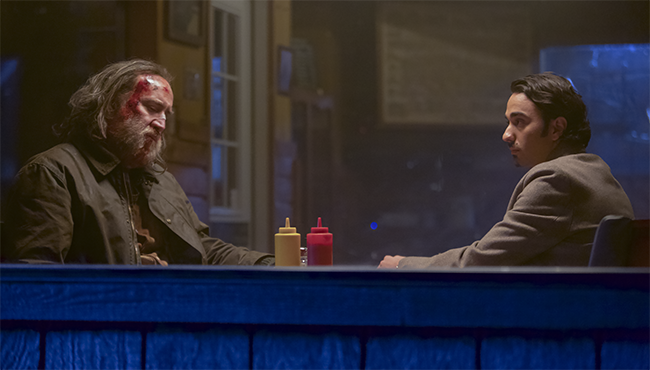
Whatever you want to say about Nicolas Cage, it’s hard to deny that he’s had one of the most fascinating starring careers of all-time. An idiosyncratic character to say the least, Cage has been undergoing a delightful renaissance over the last several years after a depressing run of the early to mid-2000s. That renaissance has included films like Mandy, Color Out of Space, Spider-Man: Into the Spider-Verse and Prisoners of the Ghostland. Whether you appreciate all of those films or not, you can’t deny that his performances have seen him more in his element than years.
Much like Spencer was for Kristen Stewart, Pig feels like the culmination of Cage’s return to form. Most people did a double-take when they heard the buzz around a film starring Nicolas Cage as a truffle hunter who goes on a path to find his stolen pig. On its surface it sounds like a silly concept, the kind of direct-to-video thing that has often dotted Cage’s career. But those who have given into the hype and checked the film out have been treated to an emotionally brutal yet honest and restrained story about processing grief in the face of unimaginable loss.
I’m not going to lie; part of my love of this film is how authentically Oregonian it is. The film is set in my home area of Portland (and was filmed on location), and it feels authentic to a city that is often misrepresented in popular culture. But that’s just the cherry on top of what is already a great movie. Writer-director Michael Sarnoski doesn’t overly convolute the story, which could have fallen into the violent elements of a revenge story to punch things up. There’s just enough of that to fit the story, but Sarnoski instead focuses on his characters to great effect. Alex Wolff gives his best performance since Hereditary as Amir, the young man who Cage’s Rob enlists for help, while Adam Arkin delivers nice work as Amir’s disapproving dad. But it’s Cage who draws us in with a understated performance that reminds us just how good he can be. It’s a raw, emotional piece of work that grab onto the heartstrings and won’t let go, making this one of my favorite dramas of the year.
#12: Last Night in Soho
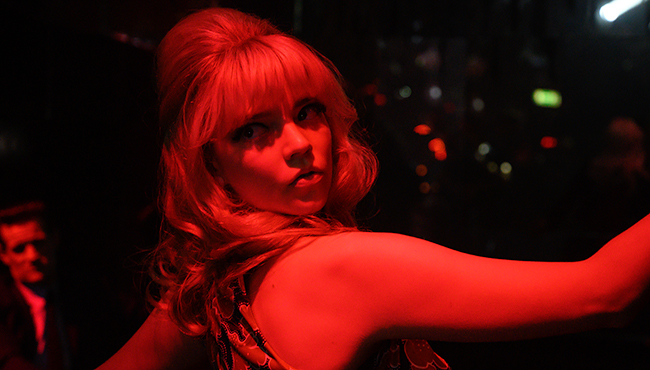
Cards on the table: I am a huge Edgar Wright fan. I know his movies aren’t necessarily for everyone, but there is not a film he’s directed that I haven’t loved or at least really liked. I’m also a huge fan of Anya Taylor-Joy, so Last Night In Soho was right up my alley and I had high expectations going into it. And while it’s not a perfect film, it mostly delivers on its concepts in a big way. Wright lends his substantial visual flourish to this story about young fashion student Ellie (played with everyperson relatability by Thomasin McKenzie) who, alone and isolated in London, finds herself receiving visions of a girl named Sandie (Taylor-Joy) in the same area during the 1960s.
As the film progresses, Wright takes what is first glamorous through Ellie’s eyes and turns it to the horrifying. It’s a brutal takedown of nostalgia, reminding us that those glamorous times of the past weren’t all they were cracked up to be if you were a woman. Nostalgia is shown to be a dangerous thing, something that is particularly topical right now, and both Taylor-Joy and Matt Smith (in a villainous role) do a fantastic job with some very uncomfortable scenes set in the past.
Wright fills Last Night In Soho with scenes both technically breathtaking — such as a dance sequence involving Smith, Taylor-Joy, and McKenzie — and squirm-worthy. It gets a little clumsy around the idea of sex work, and there’s a divisive plot twist toward the end that doesn’t work for others but does for me. Add in some superb supporting work by Michael Ajao, Terrence Stamp, and especially the late Diana Rigg, and you have a great ensemble cast elevating a twisty bit of psychological horror. I get why Last Night in Soho doesn’t quite work for everyone, but to say it did for me is an understatement.
#11: Nobody
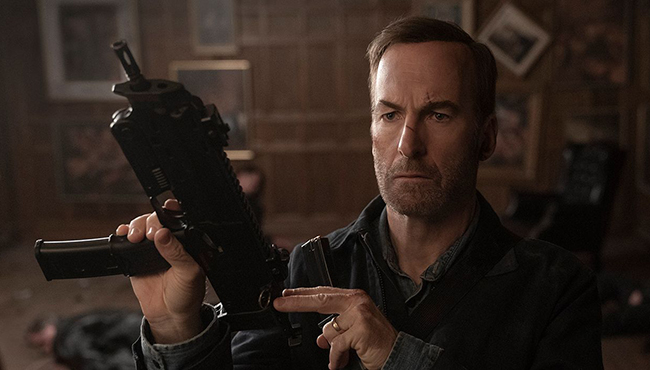
It feels like Bob Odenkirk has been waiting for a blockbuster to break out with for a while. Not that a guy like Odenkirk needs to be in a big-budget effects or explosion-laden extravaganza by any measure; he certainly isn’t your standard action hero type. But Odenkirk has seemed to be bubbling just under the A-list for a while; an absolute star who consistently delivers some of the best performances out there, but who isn’t the kind of guy you market a film on by name value alone.
Nobody proves that wrong. There is a lot to love in this film, from Derek Kolstad’s surprisingly funny and thrilling script that grounds itself in rootable characters to director Ilya Naishuller flexing his action credentials with some crazy sequences. Naishuller was previously known best for Hardcore Henry, an all-style, no substance adrenaline shot of an action flick that I didn’t love. He’s grown a lot in the last six years as a filmmaker, investing his sequences with a sense of fun and style that was lacking in Henry. Naishuller also populates his film with disposable but charismatic villains and a supporting cast effectively filled by Connie Nielsen, RZA, and the absolute delight that is 82 year-old Christopher Lloyd kicking ass.
Even with all that to enjoy, the lynchpin is Odenkirk. As Hutch Mansell, a seemingly ordinary guy who gets pushed into a place he doesn’t want to be against Russian mobsters out for his blood, Odenkirk is perfection. He finds the right mix of humanity, humor, and unstoppable asskicker to make Hutch an instant favorite action hero. By no means is he indestructible here, and that’s a benefit. Naishuller runs Odenkirk through the wringer, battering him this way and that. Hutch takes plenty of lumps along the way, which makes his transition from average guy to action hero believable. He’s not formidable because he can shrug off bullets; he’s terrifyingly good at what he does because he’s resourceful, ruthless when he needs to be, and has an iron will to do what he has to do.
The obvious comparison here that people will make and are making is John Wick, which makes a lot of sense. The two films share a writer in Kolstad and a motif. They do very much feel like they could fit in the same world. And I won’t lie; John Wick and Hutch Mansell teaming up to take out scores of hitmen is something I would be ecstatic to see. That said, this is a film that can stand on its own and while it doesn’t have the action flair that Chad Stahelski invested in the Wick films, it’s no less entertaining for that because it has Odenkirk to rely on. I have no idea if we’re going to see more of Hutch Mansell, but if we get that opportunity I will be right there for the next one.
And that will do it for part one! Join me once again later this week as we count down the best of the best with numbers ten through one. Before I leave you though, I wanted to give some love and recognize some of the top documentaries of the year. I don’t include documentaries in my Best Of/Worst Of because they’re a very different beast from narrative films, so below you can see the best of the format for the past year:
5. MLK/FBI
4. Rise Again: Tulsa and the Red Summer
3. In Search of Darkness – Part II – My review
2. Summer of Soul (…or, When the Revolution Could Not Be Televised)
1. Woodlands Dark and Days Bewitched: A History of Folk Horror – My review
And that is that. Until later this week, don’t forget to read the many other great columns, news articles and more here at 411mania.com! JT out.







